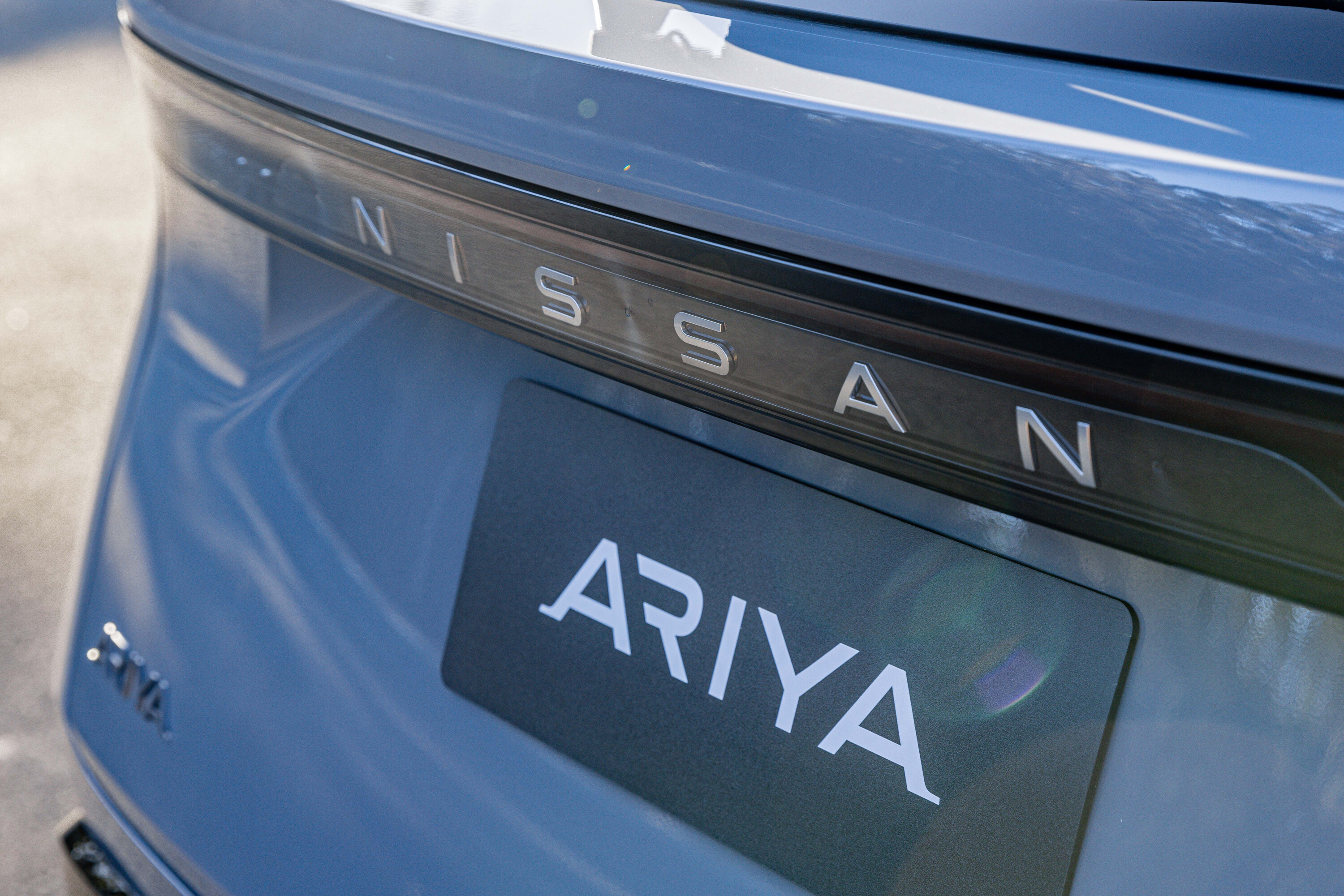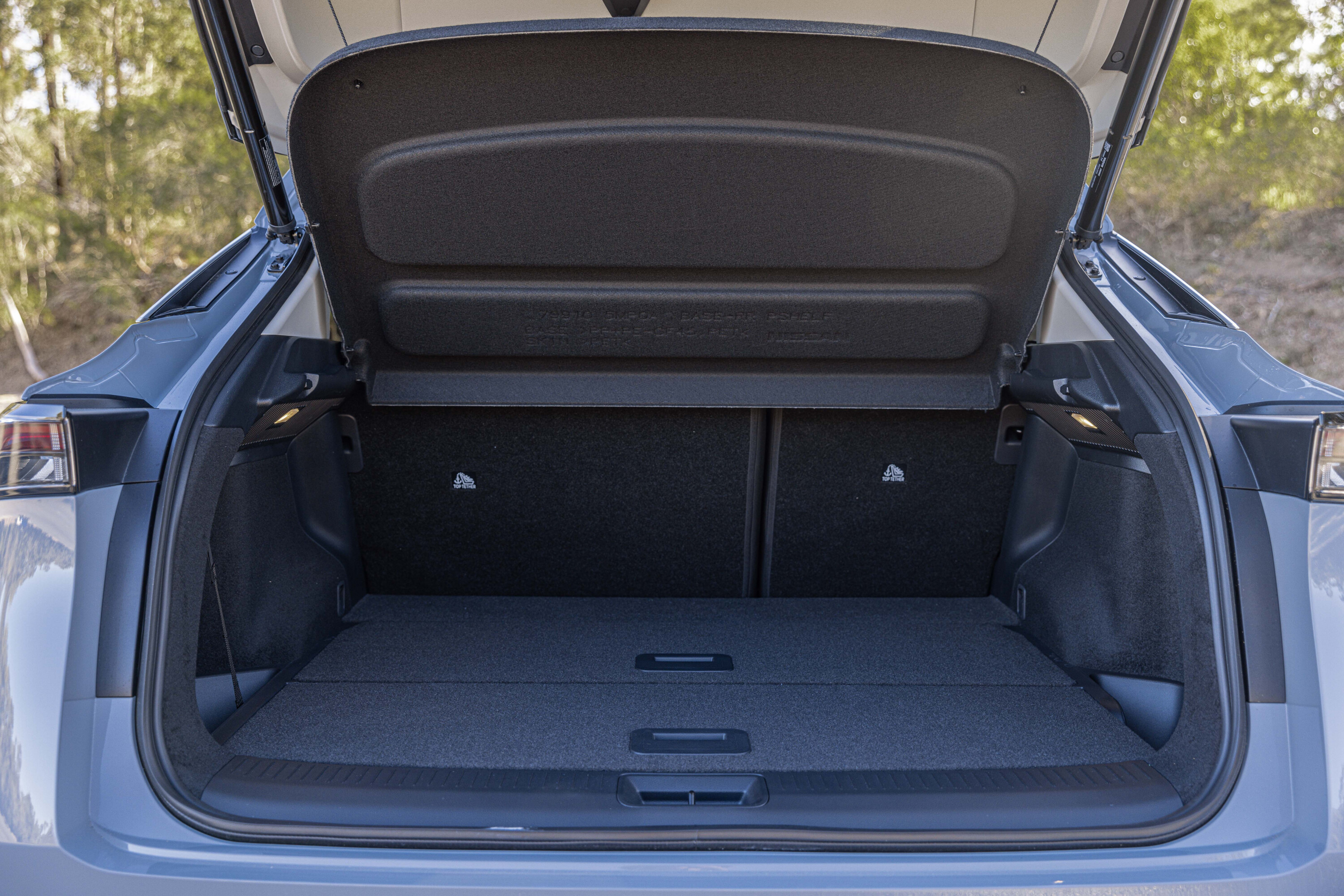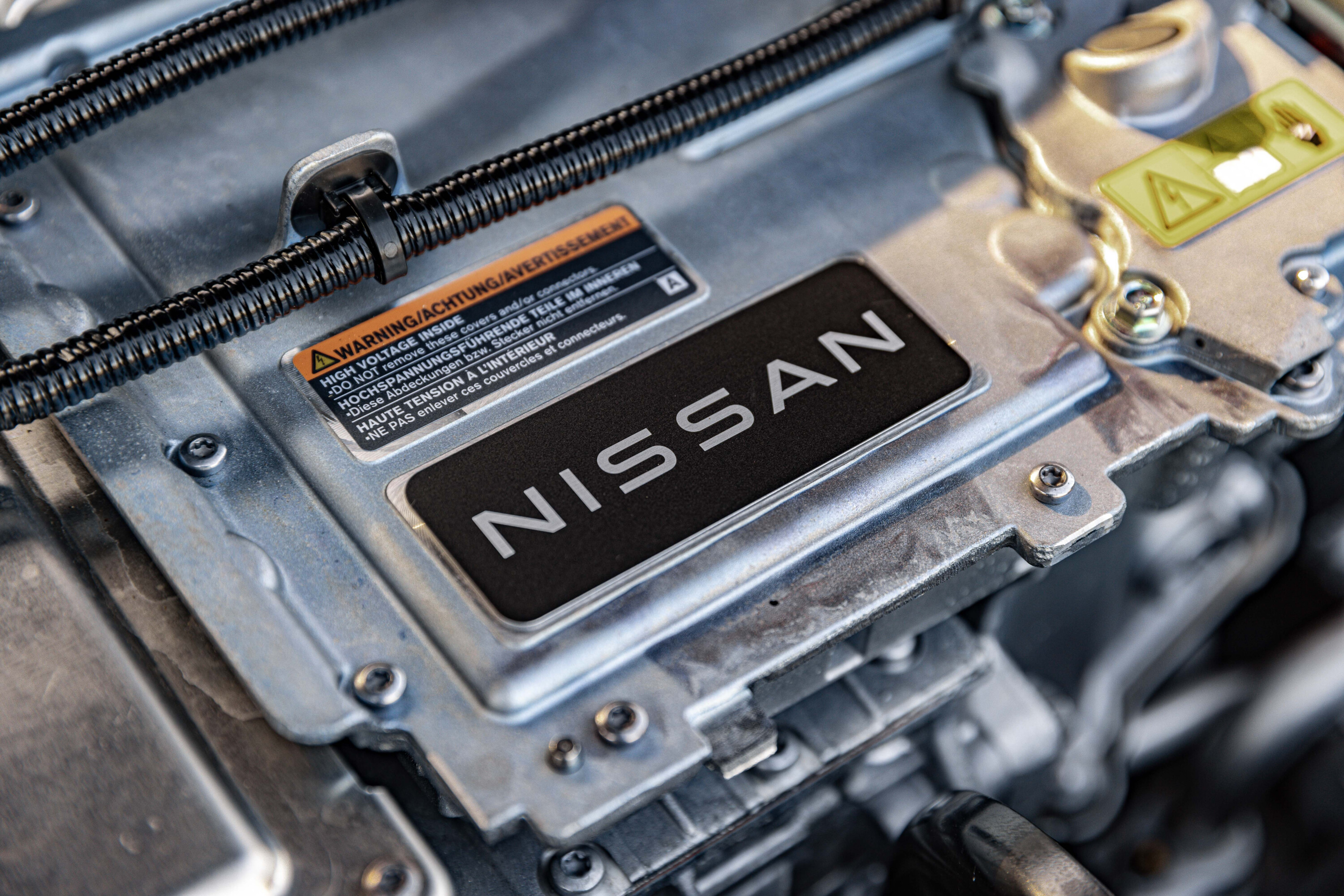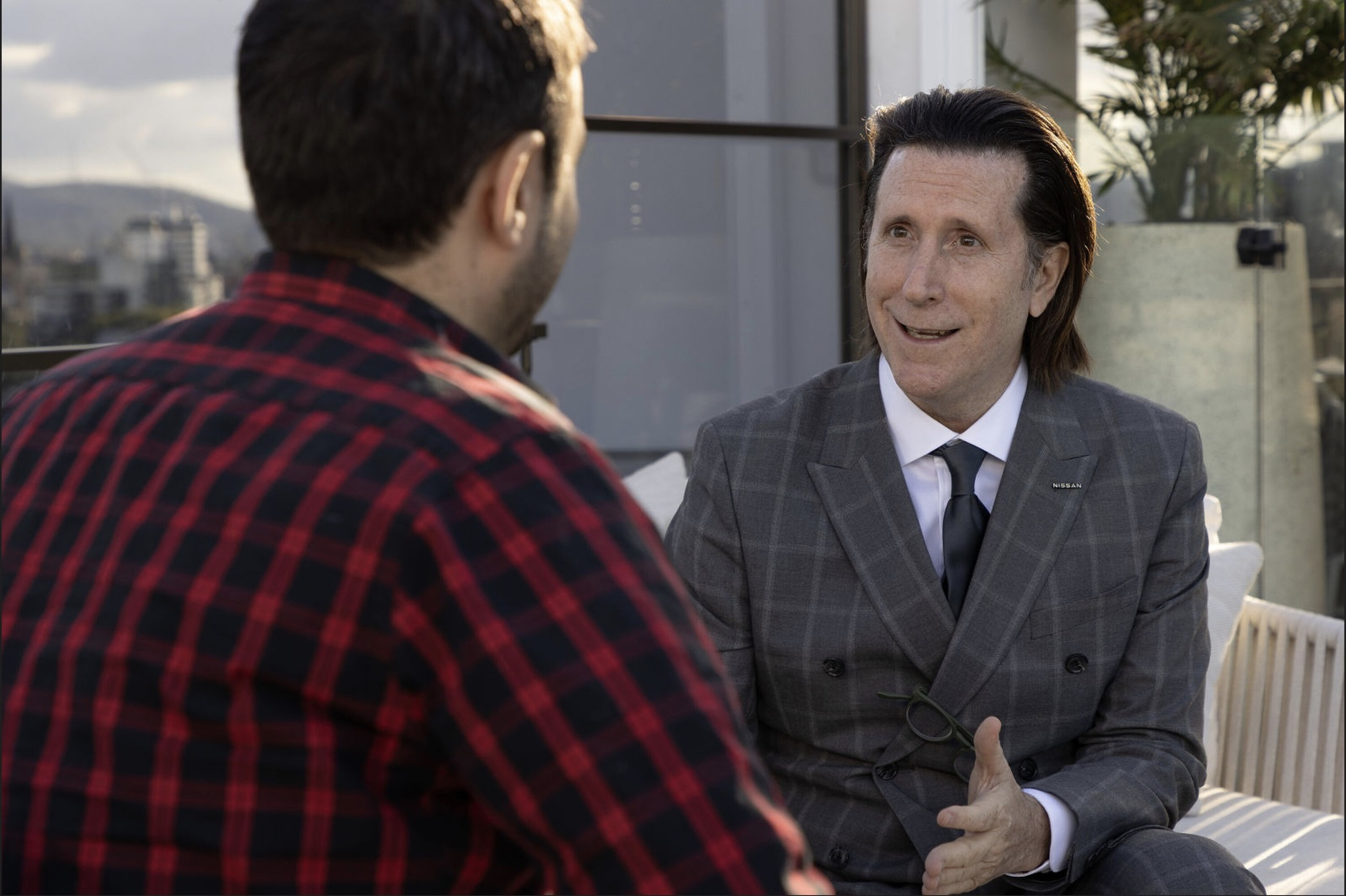With a storied history in car manufacturing, and having overseen the development and design of multiple iconic cars across both Nissan and its prestige Infiniti brand, Alfonso Albaisa has seen a lot of change.
This is easily the biggest.
The entire industry is cresting a wave of electric vehicle development. Many brands are now rolling out their first EV, some faster than others, while others like Nissan work away at their own EV renaissance.
You’ll know Nissan was well ahead of the game with its first Leaf EV launching here way back in 2012. The second-generation Leaf repurposed much of the first car’s body and architecture, while adding advanced battery and vehicle-to-load technology. It’s less of an innovative pioneer than its predecessor, but Nissan has a host of new EVs coming, including the Ariya we pored over this week in Brisbane.
To understand the inside perspective at a brand that spearheaded the world’s exposure to EVs, we sat down for a chat with Albaisa – Nissan’s Senior Vice President of Global Design – and talk technology, design and Nissan’s future.

WHEELS: With the Ariya setting the foundations for Nissan’s next phase, it must be an exciting time for designers like yourself – with the ambition set for 2030 and the models to come based on the Ariya.
Albaisa: Well, the simple answer, of course, is yes. But, probably the more emotional or realistic one is that you have to remember when Ariya was done – so a few years back, four years or so – there wasn’t really this landscape that we know today with all EVs.
“2030’s ambition is based on the success and the breakthroughs that we can achieve for Ariya”
Of course, there was the Tesla and the Leaf for a long time, but we had this chance with this blank canvas. Even then you’re (as designers) not really thinking of 2030. 2030’s ambition is based on the success and the breakthroughs that we can achieve for Ariya.

Even from an HMI (human-machine interface) point of view: the wood, the switches coming through the wood that are haptic, pretty much the elimination of most physical buttons, the decisions on the volume control – whether we keep that one and a couple of physical buttons – these were discussions you didn’t have before Ariya.
Like which buttons do you not need, and “not need” means that you need some flexibility because the systems were going to have so many apps and promises of things like photos, the over-the-air updating… so physical switches can sometimes limit your ability to modify.
These discussions were never had when designing the kind of mainstream cars that we have. The first step was the prototyping, because with most of these things you didn’t have an internal benchmark like, “Okay, it’s gonna be like that but a little bit of this.”

It was a completely blank canvas, and a lot of things like the twin screens and the undulation that you’ve seen, this was based on huge studies, which, I’m smiling … because they’re finished … but they were not easy.
The reality is your eye has a certain focal distance that is impacted by looking out and then looking in, looking out and looking in so you shouldn’t have the meter close to the driver, but the HMI area should be close enough to reach because, at this time, voice control is not universal. In China, yes, but other places people don’t really love that.
So that screen had to come in closer. But we wanted a monolith. So that piece of glass [used for the twin screens] – it’s glass, by the way, it’s not plastic – was a project all by itself.

“The project was full of these ‘first times’ for us”
And I remember when I got the first batch [of the glass] and it looked like Salvador Dali clocks. They were all on the table and we were checking for anything happening with the glass and stuff like that.
The project was full of these “first times” for us and decisions about “what do you do with the guts,” because now you don’t have a motor in the front, or you have one but it is small. So moving all the guts into the engine bay motor bed created an open space.
We did prototypes of having a centre console and no centre console, and it was all about these “firsts”. So when we finished and we liked it and we felt that it gave a different experience, then you start dreaming of 2030.

WHEELS: As the Ariya includes, as you said, the first of many designs, does that indicate future models you’re designing now will share what you’ve learned from the Ariya going into the next phase?
The beauty and the difficulty with designing this is that it’s simpler when there are fewer physical components. It’s a blank canvas, so you can decide major things that you can’t do on an ICE car.
“The thing is that the technology is still changing dramatically, especially battery technology and solid state”
The thing is that the technology is still changing dramatically, especially battery technology and solid state. There are questions on when that is coming, and whether those are very thin, and even the chemistry that you have today is changing, so some dimensions will change and thus it will change the platform. So how we used to define a platform in the EV world is a little bit different.
So you might find that for next-generation cars, it’s not exactly an Ariya and it’s purely driven by the massive advances that are happening in the world today. Not just battery, the motors, and questions of how many motors and where are the motors.

WHEELS: So will we see elements shared, not just EV or e-POWER, but in internal combustion engines as well?
Especially, because with e-POWER our intentions are to consider that EV and e-POWER are like cousins. Like a hybrid is a cousin of an ICE car where you’re still relying on the ICE engine to drive the wheels, while the e-4ORCE X-Trail is more related to the EV because the internal combustion bit is not connected at all to the wheels at all. It’s just generating power for the batteries.
And as a result, you get all the benefits: the torque, the acceleration and the silence of an EV. So when we were designing our strategy of e-4ORCE, it was much more linked to the feeling of thrill you get with EVs.
“Nissan is in full-on change”

That will get more so as the reality of ICE cars may be diminishing a little bit because that’s just the realities of the tendency of consumption; it’s what people want, and the e-POWERs will continue to become more efficient by being linked to the motors and the batteries and all that.
So we’re in full-on change. So my rambling is literally because daily these innovations are coming and we’re like, wow, that’s cool. And then you chase another thing.

WHEELS: So day-to-day, changes can take you in different directions?
Yeah, and some things are driven by regulatory things. Europe is going far ahead, more than Japan for instance, and mass-produced EVs were kind of born in Japan with the Leaf.
So our European cars will mostly be EV, and that’s so exciting because you can imagine – I’m not confirming … I’m not saying I’m doing this – but you can imagine that some of our iconic names will jump to EV. Whereas right now, the things you’re seeing is that Ariya is a new name. We haven’t really started considering which cars will jump to EV.
It’s super exciting, especially because our portfolio is full of cool things. I’m not saying that others do not, but I’m just saying that we have the benefit of 90 years of some interesting cars.
“So our European cars will mostly be EV, and that’s so exciting because you can imagine… I’m not confirming… I’m not saying I’m doing this… but you can imagine that some of our iconic names will jump to full EV”
WHEELS: One of those cars is the Patrol, which may be harder to get into the EV space and I imagine it’s more likely to go down the e-POWER route. But will it still share design elements seen in the Ariya? What may transition to the Patrol?
Some of it is culture change and definitely the technology expectation. It’s not just EV, where it’s even changing today. But the screens and the user experiences were kind of more driven by the EVs, and ICE cars were a little bit more orthodox as a user experience. But that is not going to last.
“ICE cars were a little bit more orthodox as a user experience. But that is not going to last”
It’s not related to the powertrain; in reality, it’s related to how humans live. So easily, you can see a Patrol coming down – I’m not saying that it will – but all the cars will have a such a high level of connectivity that you need to change certain things aesthetically and things are going to be much more “techie”.
For me, my personal belief and argument to management is that every car is high-tech for Nissan because that’s to our benefit.

“The issue for Patrol is not so much powertrain to be honest, it’s the history of the car”
Japan was historically famous for breaking new ground on consumer products that use technology to change, and I need something to be the ambassador of that. So, a Patrol would be a flagship for us.
The issue for Patrol is not so much powertrain to be honest, it’s the history of the car. This is the part that’s a bit different between us and maybe other companies – Ford maybe has some, and clearly other companies have heritage – but we have cars that are for specific uses. So Patrol really has two places: it lives in the Middle East and here [in Australia], and the fanaticism is not so much about powertrain.
Sure, there’s the V8s, but they love what that is giving them, like the ability to do anything, to go anywhere. So, our discussions about Patrol and the next Patrol is how to make an experience that is something so cool that you love it, you recognise it as a Patrol, as iconography.

But people are going to change it. They change it more here [in Australia] than the Middle East. In the Middle East they want a complete car, a wonderful car that they don’t modify … here, oh my goodness.
So as a designer, we know we have these, it’s super-focused, so we’re not really thinking about the US, South America, Western Europe. Russia sells a few, but it’s not enough.
It’s really Australia and the Middle East and those customers are very different, but they love the Patrol. That’s what they have in common. So it really is not so much a powertrain issue.
And here you do get this dichotomy between the technology needs and the iconography of a Patrol, because in reality, the cameras that we put in for autonomous driving and all of these other things are really good on the trail actually, for knowing what’s around you, underneath you, around the corner.
You use technologies that are seen for driver assist and all of these on-road things, but those are very good for off-road.

WHEELS: When you design a car like Ariya, do you have a favourite element of design or is it hard to pick a favourite?
Generally it’s hard but I can say that the journey of Ariya, because there were many firsts that were not automatically natural for us.
So aerodynamics. We’ve had fuel economy considerations before, but I never felt a huge pressure before, but with the EVs and the range … you have this need where you had to get over 300 miles; it was this psychological barrier that we never felt so much on the ICE version.
So we fell in love with that, in the sense that, ‘Okay that range stuff is really in the hands of the engineers and they’re advising us of the aerodynamics that we can apply,’ but to express that in the new style was the breakthrough why Ariya was the beginning of a new aesthetic, this timeless Japanese futurism.
Even though the Z was done in the next bay – we have a 300-metre studio, so it’s very big and open – and so all the cars were there all at the same time and they all share things, but the Ariya exterior and the tech shield, the lack of grille, the not-completely-blank face, we fell in love with this, with the Japanese DNA, the little tiny patterns in the grille.
We never thought of all that before, so Ariya opened up many doors.

WHEELS: How does the concept of utilising Japanese DNA go from an idea to what we see in the final product?
We had a big presentation to the CEO about how we felt in design that we had stopped being perceived as Japanese, and instead as “kind of Japanese”, and we didn’t like that. We thought that was wrong. Because the world sees Japanese design as kind of funky, cool, a little quirky, but all positive stuff and to been seen as “kind of…” meant we weren’t really benefiting from these things.
“We felt in design that we had stopped being perceived as Japanese and instead as ‘kind of Japanese’, and we didn’t like that”
So we made this big pitch about that, without an answer, and we said we were going to come back. And the Ariya was the comeback. And we think that we should express a kind of Japanese futurism, sometimes literal, like with the tech shield, to use some classical patterns to fully form a face that is necessary for the sonars, then the atmosphere lights to literally be a Japanese type of lantern design, next to completely haptic.

And we presented all of that as our answer to restriking this Japanese modernism.
So, you asked, “How does it happen?” We present to the board. Naturally some people liked, some people didn’t like, and you get a nice debate around the value – not so much financial value as what the people will really appreciate.
Because there’s no reference; we’ve never made a car that tapped into historic things when we were trying to say we want the future. It seems to some a contradiction, but we felt that it wasn’t a contradiction because people today have access to tomorrow and yesterday immediately with social media and everything.
It’s not like 20 years ago, we’re not old men, where you don’t look backwards, because backwards is yesterday and you have no access to yesterday. And that’s why the Z looks like that.

I’ve been a part of three Zs. When I worked on the 350Z and I remember that DDM – DDM means “go with one,” – and we had a retro one and we had the one that was selected. It was unanimous, but the CEO walked in and said, “we’re doing that one, the retro,” which was the opposite.
The Z is not really retro… but it kind of is, it’s the 240Z, but it was unanimous because somehow in today’s world, we don’t have this obsession that you cannot play with history. That history is as fresh as tomorrow. It depends how you make it.
And this stuff all was happening to us at the same time, these discussions, like Z and Ariya and Patrol, and this new phase, the one you have today was designed at the same time. It considered what it means to be Japanese, what it means to be innovative or “techie”, even in an orthodox Patrol.
“I love the glass, the Salvador Dali glass. I also love the haptic because that was a breakthrough. Nobody is doing haptics like that”
There’s two things on the Ariya: because of the effort involved I love the glass, the Salvador Dali glass. I also love the haptic because that was a breakthrough. Nobody is doing haptics like that.

We had so much negotiation. When you open the doors next time, look at the power window switches and look at everything – it is blacked out. We negotiated heavily that even with the power window switches, you don’t see the icons. But when you hit the starter button, everything comes from nothing.
This was a metaphor to the freedoms of technology, that any surface is a technical surface. Even wood is a technical surface. The achievement might be the haptic features of Ariya, but more because it’s really that we converted a piece of wood into your HVAC control (laughs). Even that was an impressive exercise.

WHEELS: I imagine wanting to include Japanese DNA but then making it consumer-focused is an incredibly difficult challenge.
Remember these are not toys. In the end, cars are serious objects.
So all the things we had artistic dreams of, we cannot ever make it not safe – but be quick and intuitive. So we did everythng we could to maintain that.
The fact is that people believe, rightfully, that electrification will bring change. So the company was very open to this. So they allowed us to challenge all of these things and even play with the past while we’re full on up to here in the future with haptics and all of that.

WHEELS: I don’t know how much you can talk about the next Leaf, but will we see similarities between the two? Are they going to share a lot of common ground?
Philosophically they share this timeless Japanese futurism. That’s a bit exciting. So the reaction that we believe you will have is, “oh, okay. This is what technology can make.”
It obviously moves on from Ariya, so many things like aerodynamics especially need a lot of learning.
There is a sense of the Japanese futurism that is starting from Ariya but goes beyond Ariya – and definitely you will say to me in a couple of years or so, “I see what you mean.”

“You will say to me in a couple of years or so, “’I see what you mean’”
Because five years in time can make big difference with development, and the things that we love about Ariya are now popping up now. There’s progression, so there is an evolution.
Ariya is also a bit of a premium EV, so the beauty of Leaf is that it’s democratised electrification. Well, it has a lot of competitors and it’s a bit of an old car, but I always have to remind people to think back to when it was launched. Okay, that’s one day. But we all have to remember that to make a car took four years.
So what was the context of four years before the first one? Basically there was only some EVs in San Francisco, very dusty two-seaters that could travel around the block and that’s about it.
But the real leap was the decision to say, “No, no this EV has to hold five people, and be comfortable with no compromise. It’s not noisy and it must be silent on the road. You basically can never disappoint the daily needs of people.”

We were designing the Leaf, and of course the Tesla Model S came out with a finished design – and it was like, “okay, they went with a $100,000 car. This is different.”
I remember that time. I thought, Wow, okay, ‘that’s a good list.’
But there was nothing to look at. Who were you going to look at? At that time before they asked, we were designing the Leaf, and of course the Tesla Model S came out with a finished design, and it was like, ‘okay, they went with a $100,000 car. This is different.’
So, I have a huge respect for that. So the next Leaf has to be like that. It cannot compromise. It must be the most effortless car and it has to be stunning and futuristic; much more than currently .
And it must have all the technology that you can imagine a bit beyond Ariya because of time. It’s a matter of the time, and the acceleration of EVs are impressive. We have suppliers and they are all doing nutty things that we can then use and buy and make the car experience so much more special.

“Cars will drive by themselves … it’s just a matter of proving to people that they don’t have issues”
But somebody has to do it. The car companies alone cannot do it. It’s such a big thing to reconsider every door handle, the antennas everywhere, LIDARs everywhere. How many cameras can you fit. If you had said 15 years ago that you were going to make a car, and it was to have 14 cameras on the exterior, that’s not, well – that’s not a bad number – but now it’s needed.
And the cars will drive by themselves – they probably are already capable of it – it’s just a matter of proving to people that they don’t have issues.

This is the other part as a young designer. When I want a bumper side to do something, I get resistance from elsewhere and there’s a fight with R&D. Well, this is a normal battle.
This is a different time because these are sonars and there’s a lot of optical distortion in the way the waves come out through the bumper affect how clearly the vehicle sees other things.
So it’s funny how it changed my attitude – maybe it’s my age also – but it changed my attitude completely. First of all I ask whether it’s related to money or if it’s the ability to have a perfect view of things people don’t see.
Then immediately I’ll figure out a way to make that work.
WHEELS: Finally, are there are any other brands or cars that have influenced you over the years?
From the beginning I can say without doubt that I’m a car designer because of the Jaguar E-Type. (Stevo says: let’s not tell him about this E-Type with 370Z lights then…)
I still remember the moment making boat models with my Dad in his architecture studio out of all the wood he wanted to use for making house models. I’d make boats, little 16-foot Donzi boats and I’d put them on the model of Miami.
Then I heard a thunder from a car’s engine and thought, “oh my goodness”, and I put the wood away and from that moment I was drawing cars. That and the Alfa Romeo Duetto Spider from The Graduate. I’m old, so all my references are from 1969. The Jaguar was 1970.

And then other times the Koreans are very impressive, and I say the Koreans because they are ambitious like with Hyundai and Kia.
But some things inspire you from beauty, pure beauty, so 911s I still respect, and how they manage the generations. How you keep something the same but refine it so much that it looks like it’s perfectly fresh, it’s impressive.
And then other times the Koreans are very impressive, like with Hyundai and Kia. It’s less that I love specifics, it’s more that I respect the ambition, like our corporate ambition. So this is another kind of inspiration, so that kind of drives me.

So Nissan is number one, but it needs to be number one in our own way. But you do look and admire something, like I said, sometimes for the specific and other times more for the attitude of a company for what you find interesting.
READ NEXT: That time Alfonso Albaisa revealed plans for a new Z
More EV stories to help you choose the best car for your needs
- ? EV news, reviews, advice & guides
- ❓ Short & sweet: Your EV questions answered
- ⚡ New EVs: Everything coming to Australia
- ? Australia’s EVs with the longest driving range
- ⚖️ Best-value EVs by driving range
- ? How much do EVs cost in Australia?
- ? How much more expensive are EVs?
- ⚖️ Number crunching: Is it time to switch to an EV?
- ♻ Should you buy a used EV?
- ?️ Are EVs more expensive to insure?
- ? Costs compared: Charging an EV vs fueling a car
- ? EV charging guide
- ?? EV servicing explained
- ? EV battery types explained
- ? When do EV batteries need replacing?
- ? Hydrogen v EVs: What’s best for Oz?
- ? How sustainable are EVs, really?
MORE advice stories to help you with buying and owning a car
We recommend
-
 Reviews
Reviews2022 Nissan Ariya review: Prototype drive
Nissan seems late to the electric crossover party with the Ariya, but it has a mixture of tech and heritage to make up for it. So how is it all coming together?
-
 News
NewsNissan Ariya electric SUV still no closer to Australia, could arrive next year
The all-electric Nissan Ariya will arrive in Australia no earlier than 2024, with global demand and no local regulation still to blame
-
 News
NewsConverted electric Nissan R32 GT-R concept teased
Nissan has teased an all-electric R32 Skyline GT-R, but could it be a sign of more to come?






